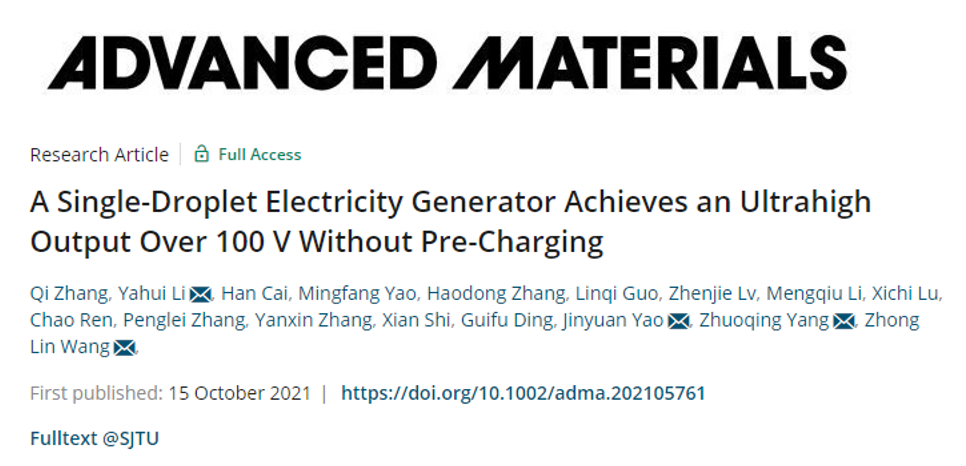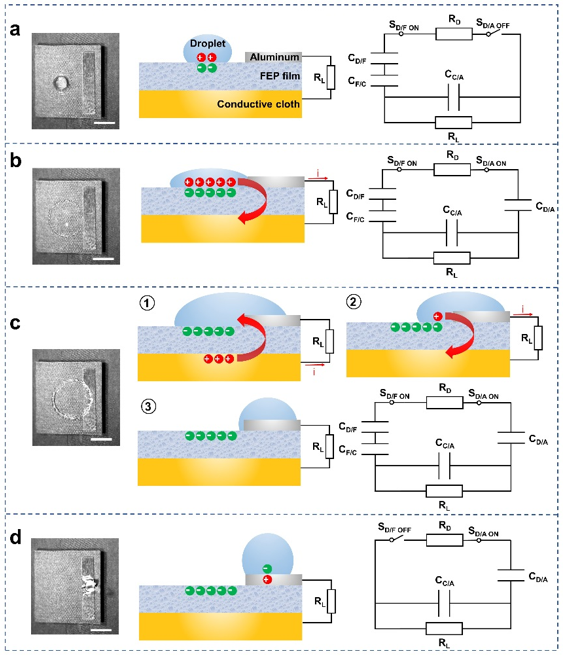- Home
- About Us
- Students
- Academics
-
Faculty
- Electrical Engineering
- Automation
- Computer Science & Engineering
- Electronic Engineering
- Instrument Science and Engineering
- Micro-Nano Electronics
- School of Software
- Academy of Information Technology and Electrical Engineering
- School of Cyber Security
- Electrical and Electronic Experimental Teaching Center
- Center for Advanced Electronic Materials and Devices
- Cooperative Medianet Innovation Center
- Alumni
-
Positions
-
Forum
News
- · Bin Dai's Team Unveils the Assembly Mechanism of β-Lactoglobulin Fibrils, Providing New Insights for the Development of Functional Nanomaterials
- · Mingyi Chen’s research group has made important progress in the field of analog-to-digital converter chips for brain-computer interface
- · Progress in the Development of Semiconductor Nanomaterials to Activate Pyroptosis for Cancer Therapy
- · Jiamiao Yang’s team achieved the high precision optoelectronic reservoir computing based on complex-value encoding
- · Significant Advancements in Resonator-Enhanced Quantum Sensing Achieved by Zenguihua's Team at the School of Sensing Science and Engineering
Prof. Zhuoqing Yang’s team of Shanghai Jiao Tong University makes significant progress in the ultrahigh output mechanism of single- droplet electricity generator
Recently, Prof. Zhuoqing Yang’s team, the department of Micro-Nanoelectronics of Shanghai Jiao Tong University (SJTU), cooperates with the Academician Zhong-Lin Wang of Chinese Academy of Sciences (CAS), and has made significant progress on the ultra-high output mechanism of single-droplet electricity generator (DEG). Based on the interfacial effect of the solid-liquid electric double layer capacitor (EDLC) and the transistor switching effect, the equivalent circuit model is introduced into the droplet electricity generator, and the efficiency of droplet power generation is greatly improved. The related paper "A Single-Droplet Electricity Generator Achieves an Ultrahigh Output Over 100 V Without Pre-Charging" was published online in the top journal "Advanced Materials" of Nature Index (Impact Factor: 30.849)

Frictional electrification is a common physical phenomenon in nature, the triboelectricity has gradually become a mainstream technology for energy harvesting and self-driving sensing since the invention of triboelectric nanogenerator (TENG) in 2012. Triboelectric nanogenerator, coupling contact electrification and electrostatic induction, has been widely investigated and developed in the fields of micro-nano energy, self-powered sensing, high-voltage power and blue energy due to its unique advantages in collecting low-frequency and high-entropy energy.

Figure 1. Energy harvesting and power supply strategy based on triboelectric nanogenerator (TENG).
Inspired by the working principle of field-effect transistors, this work introduces the electric double-layer capacitor formed at the solid-liquid charged interface into the circuit equation, and establishes an equivalent circuit model of the droplet electricity generator based on the interfacial effect and switching effect. Without pretreatment of the solid surface (corona charging or charge implantation, etc.), a single-droplet could generate a voltage of up to 100 V only using stored charges in the electric double layer capacitor. Compared with the traditional electrostatic induction power generation method, the electrical output is directly increased by two orders of magnitude. Studies also have shown that for the solid-liquid electrification interface, the output method of the electrostatic induction cannot be mechanically applied for solid-liquid case. In addition, based on the analysis of the equivalent circuit equation, the electrical output behavior and physicochemical characteristics of the DEG, it provides researchers with systematic and in-depth insights into the working mechanism of the droplet electricity generator (DEG) coupled the interfacial effect and switching effect.

Figure 2. The movement characteristics of a single-droplet on a hydrophobic interface.

Figure 3. The equivalent circuit model of droplet electricity generator based on interfacial effect and switching effect
This work emphasizes the importance of the solid-liquid interfacial effect and switching effect on the droplet electricity generation efficiency, provides meaningful guidance for the future design and development of droplet electricity generator, and lays a solid foundation for the application of large-scale droplet energy harvesting.
Shanghai Jiao Tong University (SJTU) is the first affiliation of this work, the master Qi Zhang and the Ph.D candidate Yahui Li from the School of Electronic Information and Electrical Engineering (SEIEE) are the co-first authors of this work. Prof. Zhuoqing Yang of Shanghai Jiao Tong University (SJTU) and Academician Prof. Zhong-Lin Wang of Beijing Institute of Nano Energy and Systems, Chinese Academy of Sciences are the co-corresponding authors of this work. This work was funded by the National Key Research and Development Program (2020YFB2008503), the National Natural Science Foundation of China (No.61974088) and the Joint Fund Project of the Ministry of Education for Pre-research (6141A02022424).
Paper link:https://onlinelibrary.wiley.com/doi/10.1002/adma.202105761
-
Students
-
Faculty/Staff
-
Alumni
-
Vistors
-
Quick Links
